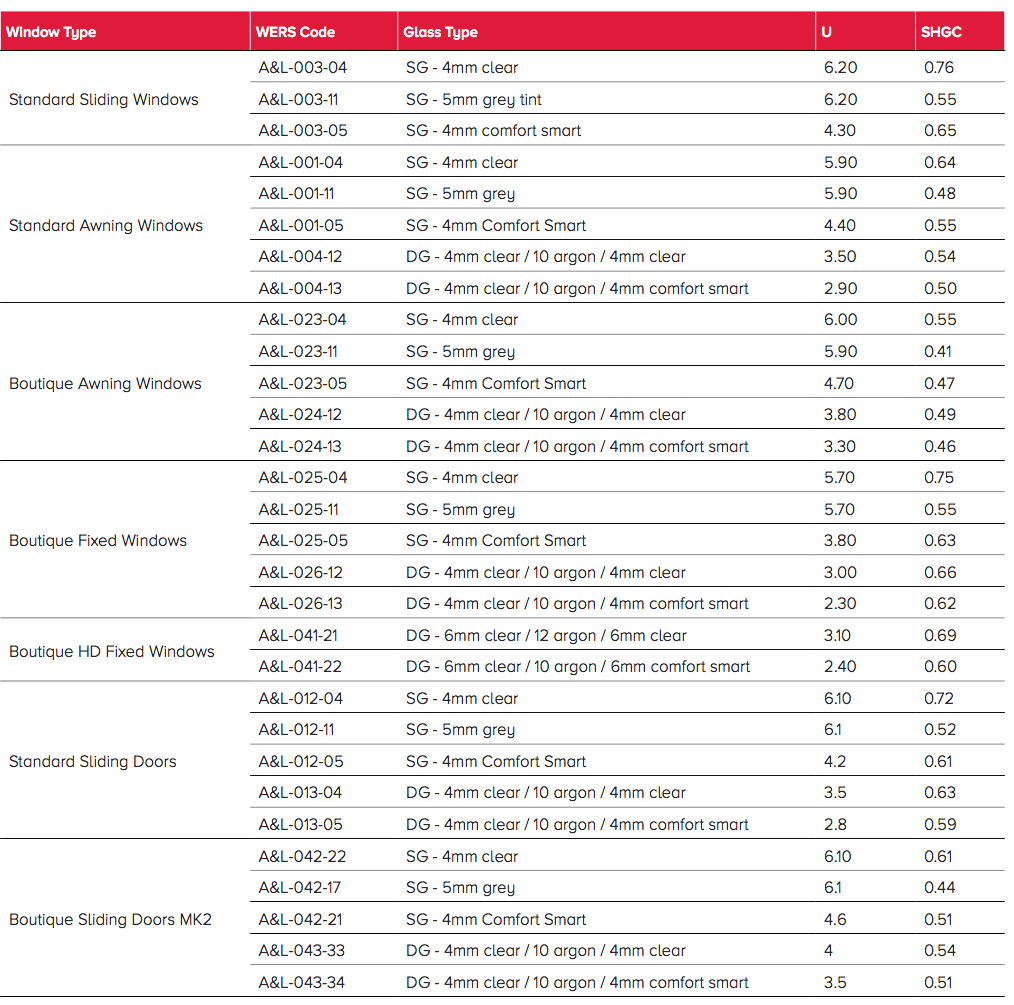
Locally made
A guide to energy ratings
This quick, easy-to-follow guide outlines some basic information around energy efficiency compliance requirements for windows.
Learn about the ratings systems for product performance and how you can avoid lost time or money due to inaccurate or non-compliant energy reports.
At A&L, we take compliance, standards, and regulation seriously.
We work hard to ensure our products offer the highest quality, comfort, and performance.
As part of that, we’re committed to creating simple guidelines to help builders and energy raters quickly understand nationally-regulated technical benchmarks relating to those categories; how A&L products measure up against those standards; and what you need to do when recording or reporting A&L product performance in energy reports.
Learn what to do as a builder
Learn what to do as an energy rater
You can also read on to understand a basic overview of energy efficiency reporting requirements, terms, and conventions.
Energy efficiency performance requirements are outlined in accordance with various sections of the National Construction Code, which is maintained by the Australian Building Codes Board (ABCB) on behalf of the Australian Government and each State and Territory Government.
The National Construction Code has provisions that relate to energy efficiency for all classes of buildings. It may also contain State and Territory-specific variations to those requirements, to accommodate differences in climate and various other factors which can impact product performance.
Regardless of your location or the style of your building, energy reports must meet the requirements of the National Construction Code to be compliant.
There are a range of performance-based simulation tools—including AccuRate, FirstRate, BERS PRO and BASIX—which are commonly used to gauge compliance and generate energy reports. It is worth noting that recent changes to these software platforms mean accurate product information is more important than ever before.
For window products, energy reports must specify performance using two main values:
These values—along with other product performance information—are recorded in an industry database referred to as the Window Energy Rating Scheme (commonly referred to as WERS). WERS codes are typically used in the creation of energy reports.

There are two varieties of WERS codes:
Product-specific WERS codes ensure builders receive the best possible price from suppliers, as well as greater assurance of compliance with energy efficiency regulations as mandated by the National Construction Code.
To ensure you get an accurate energy report, compliant window products, and the cheapest possible price for your windows, you should:
***Disclaimer: This article contains information that is correct at the time of publication but may be subject to change by other parties. It should not be viewed as a definitive guide and should be read in conjunction with the National Construction Code and any relevant state and territory regulations.